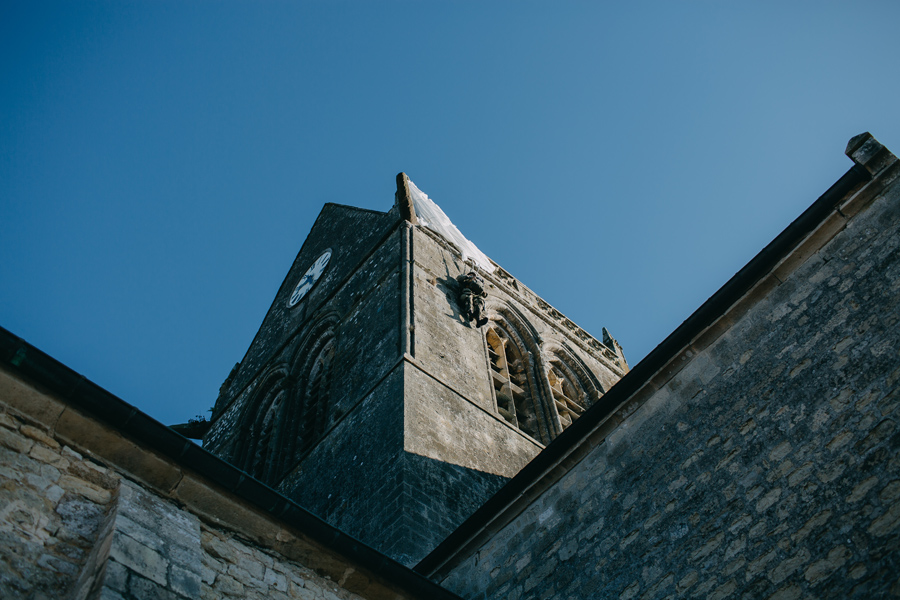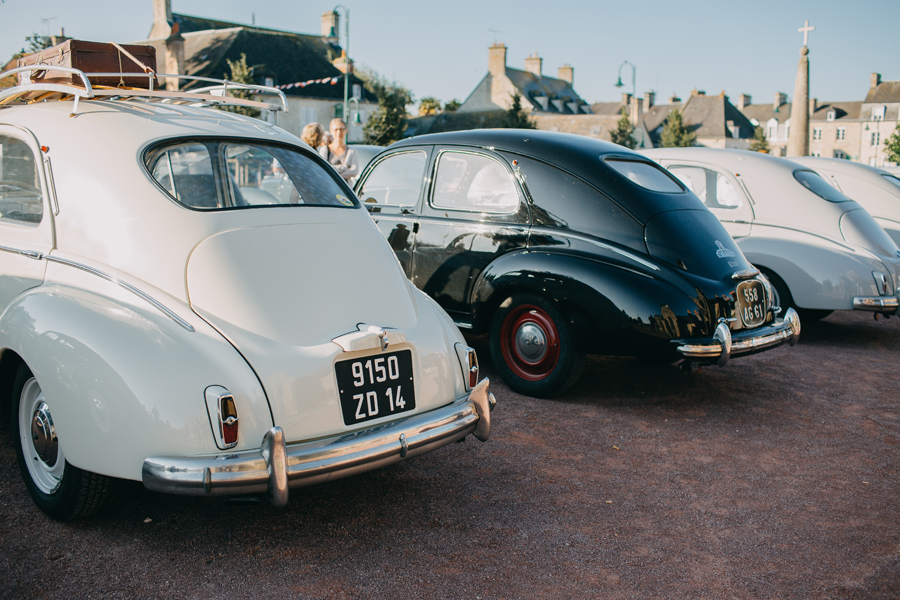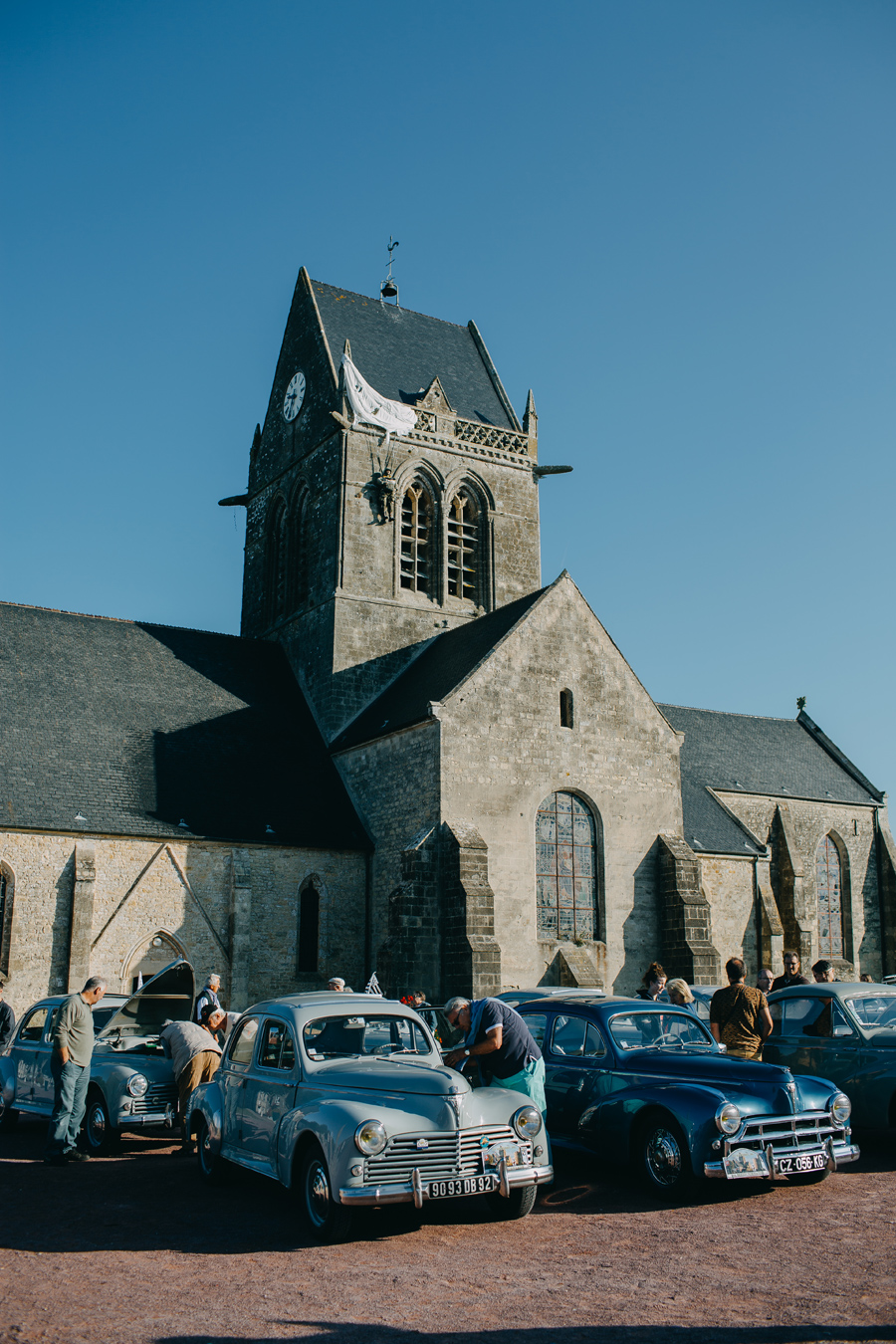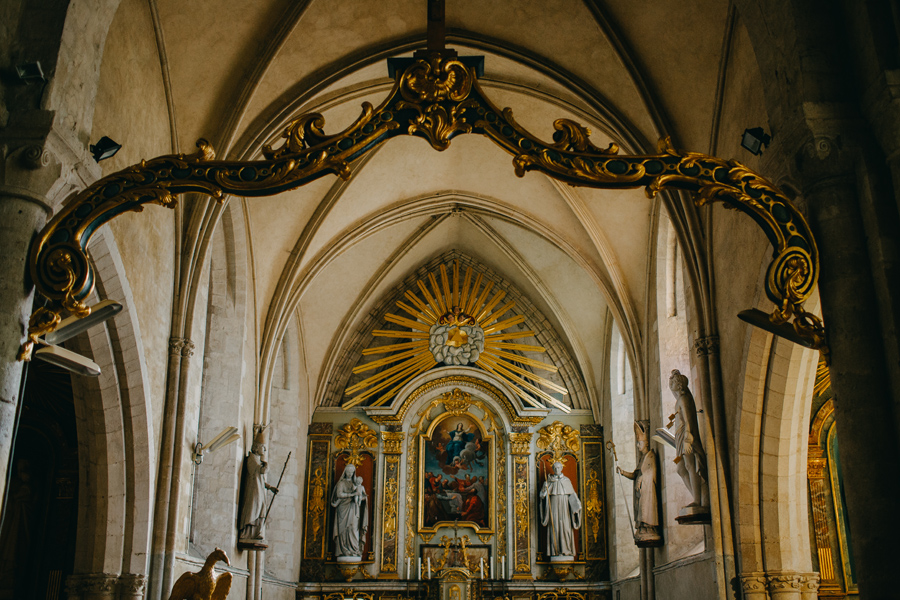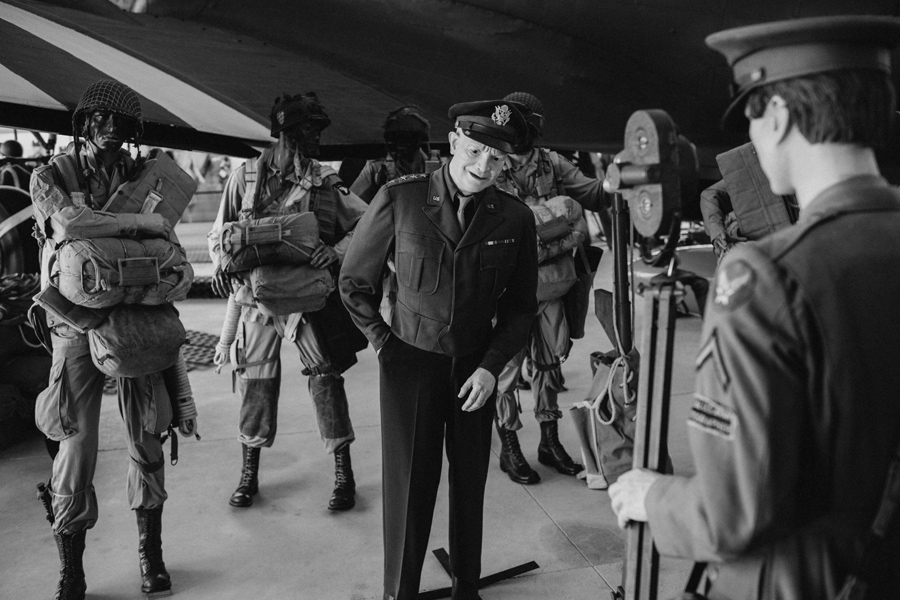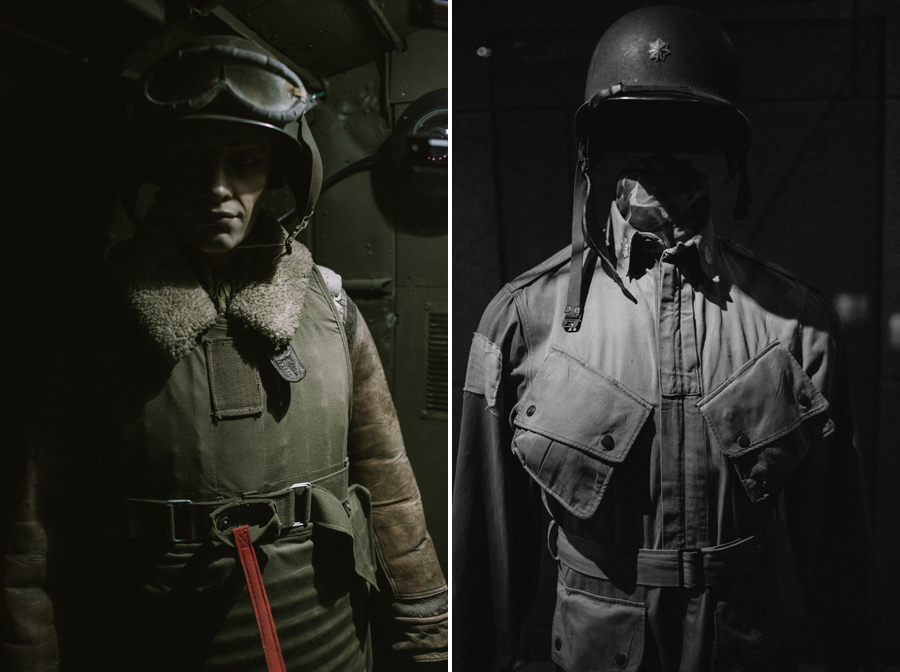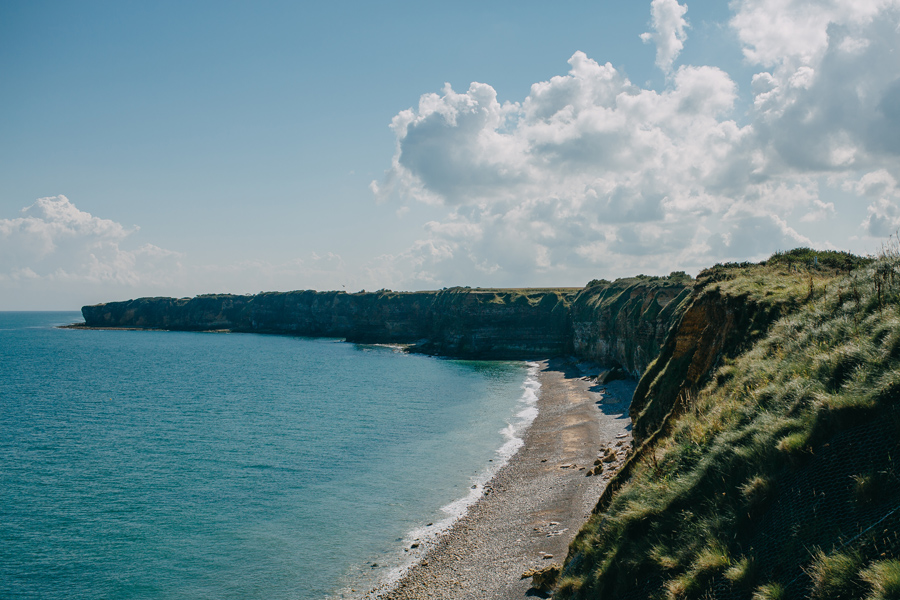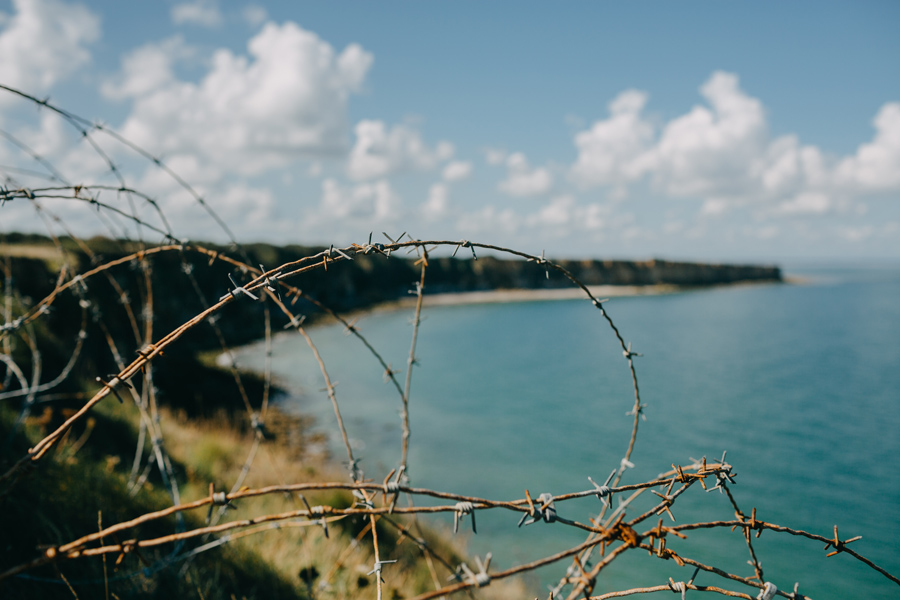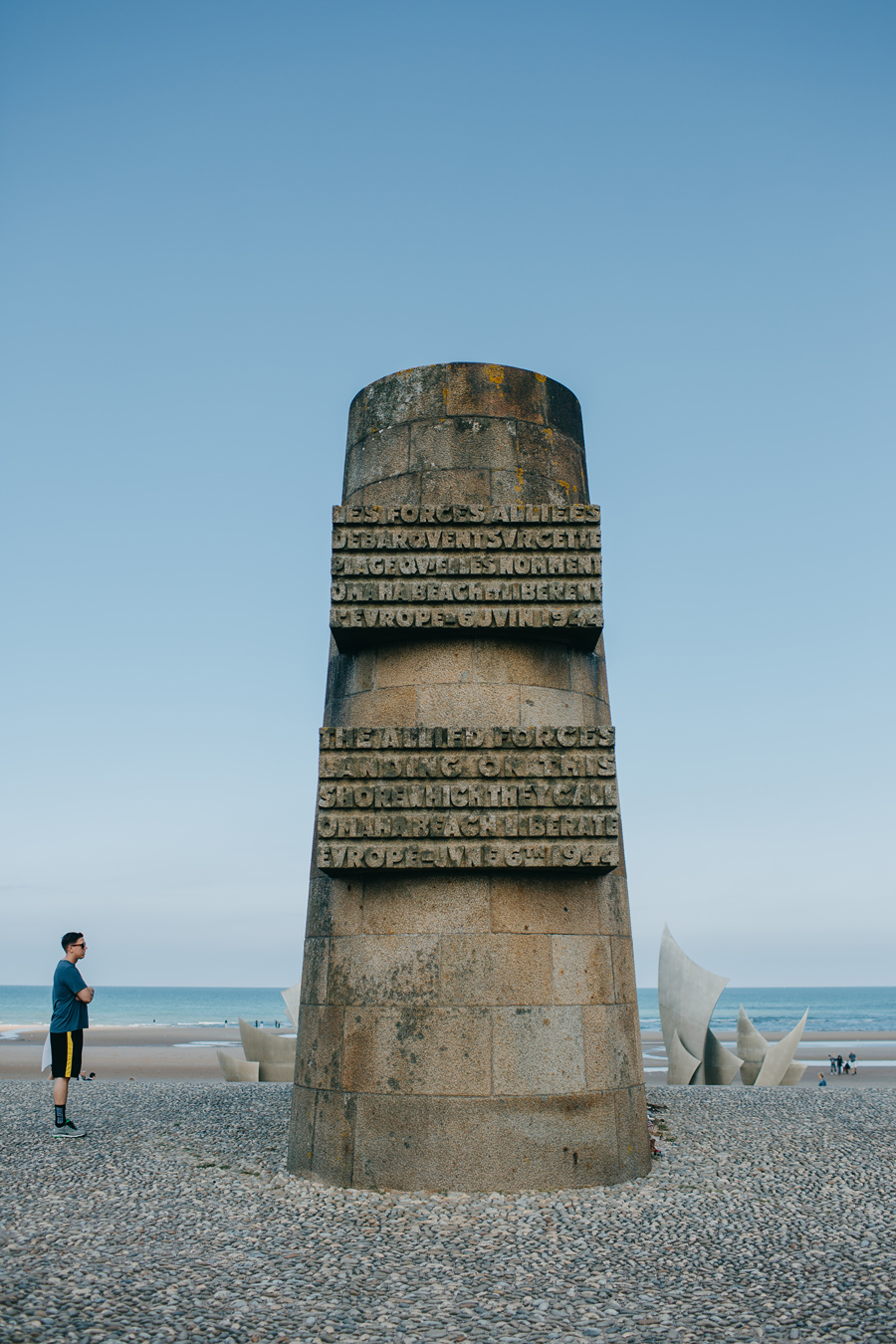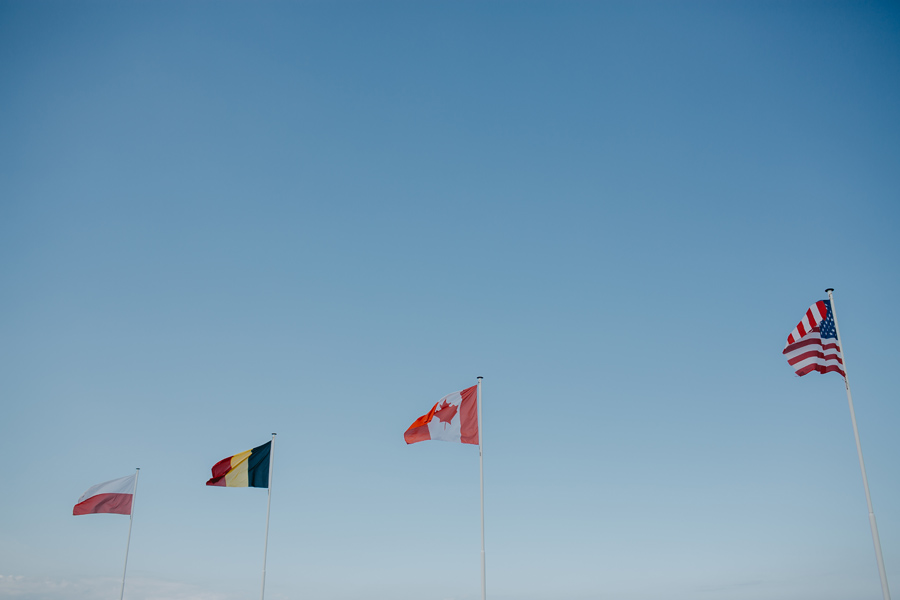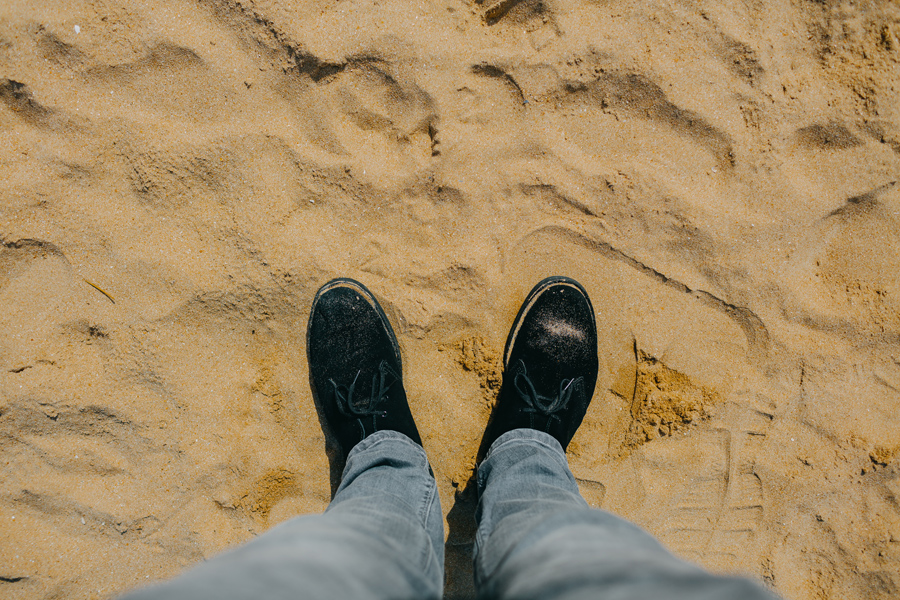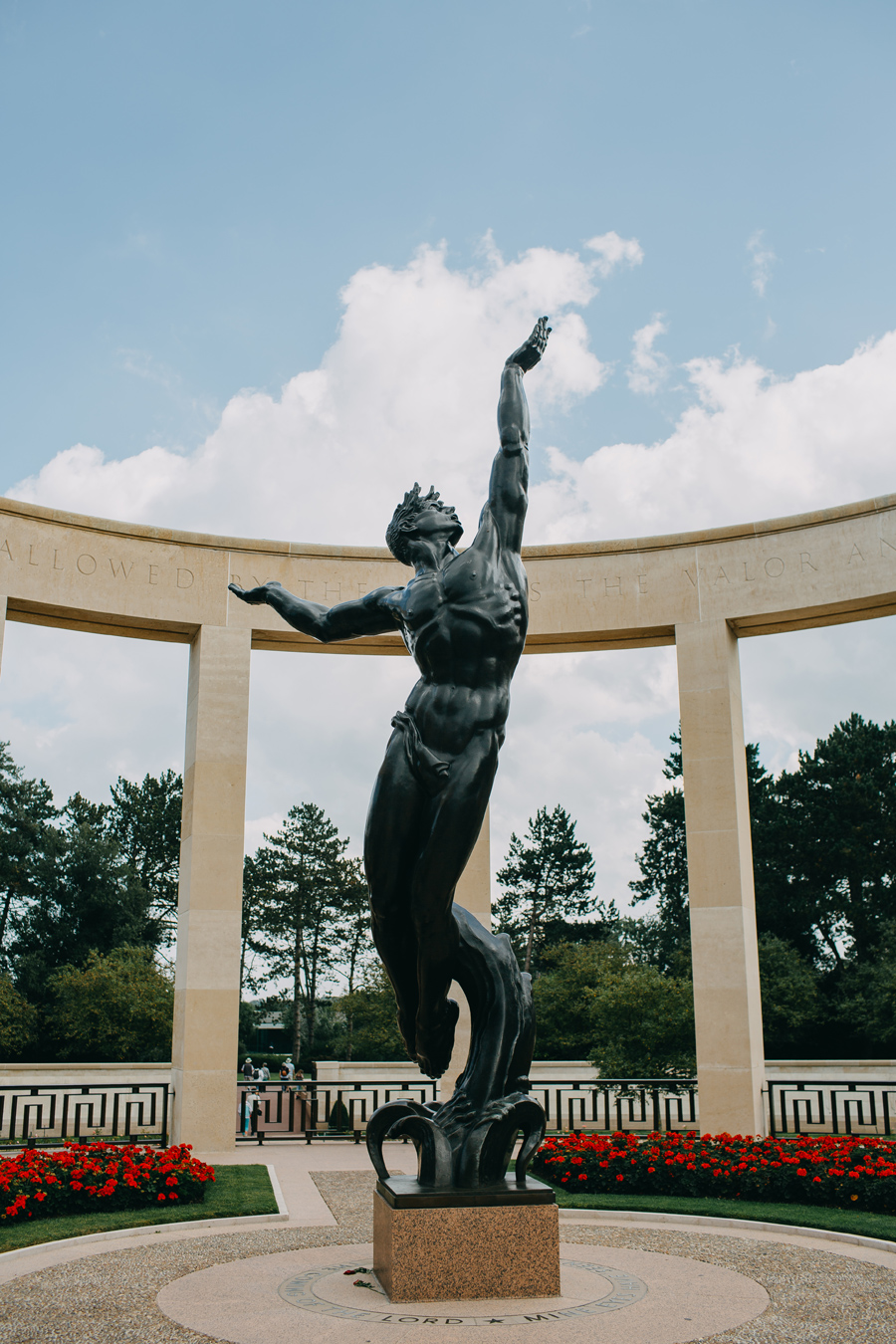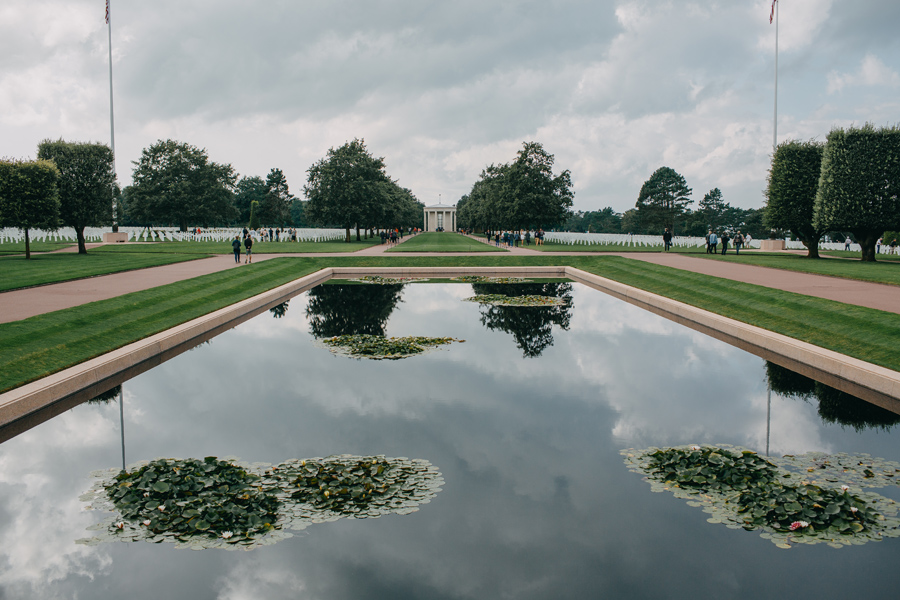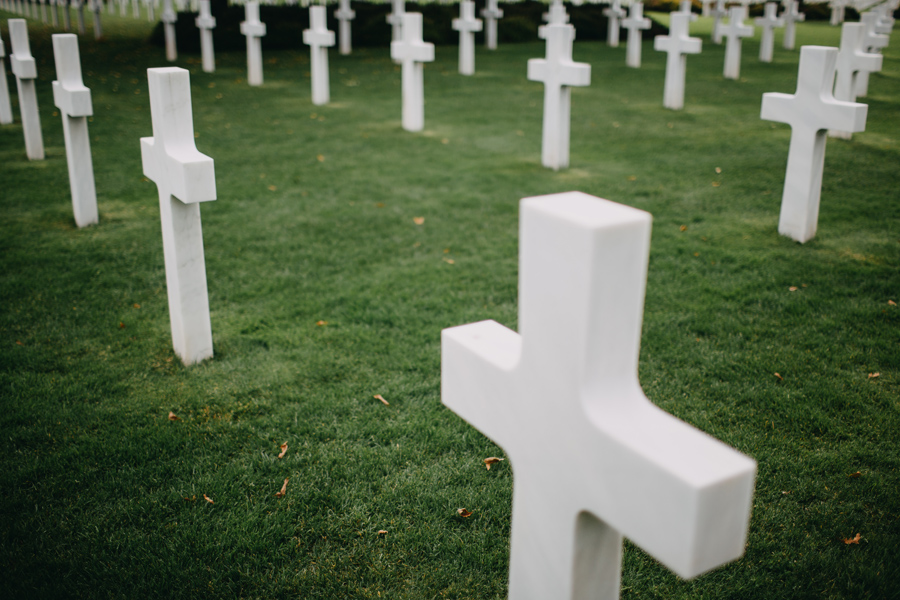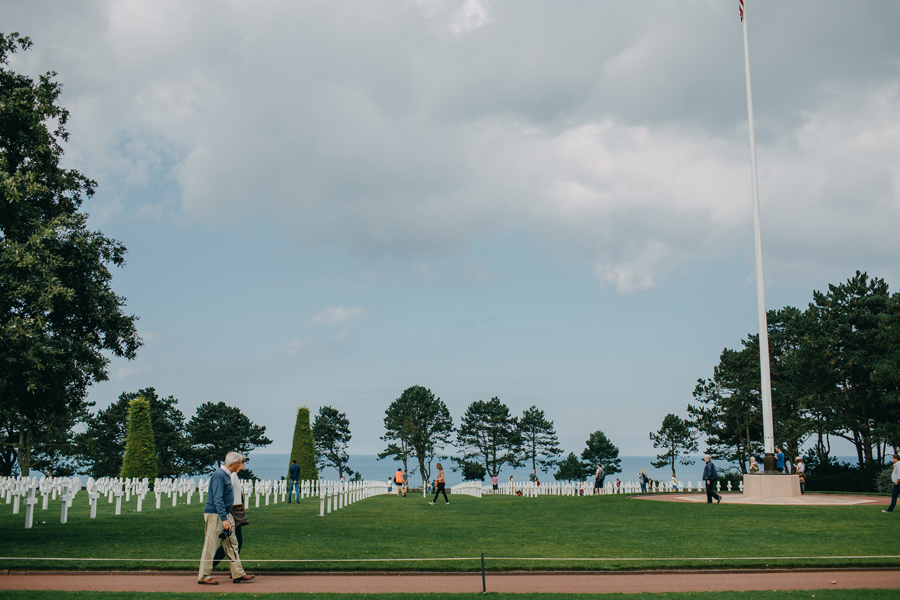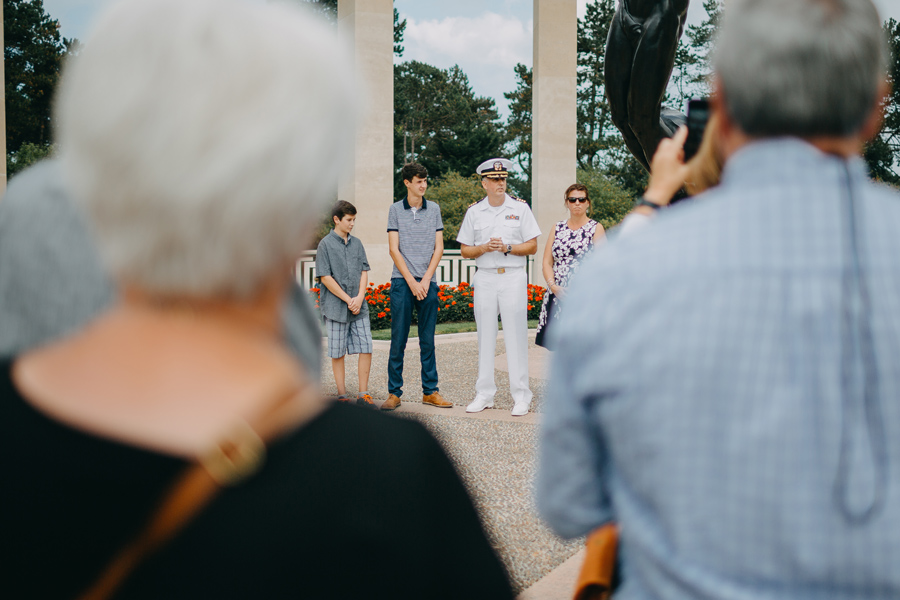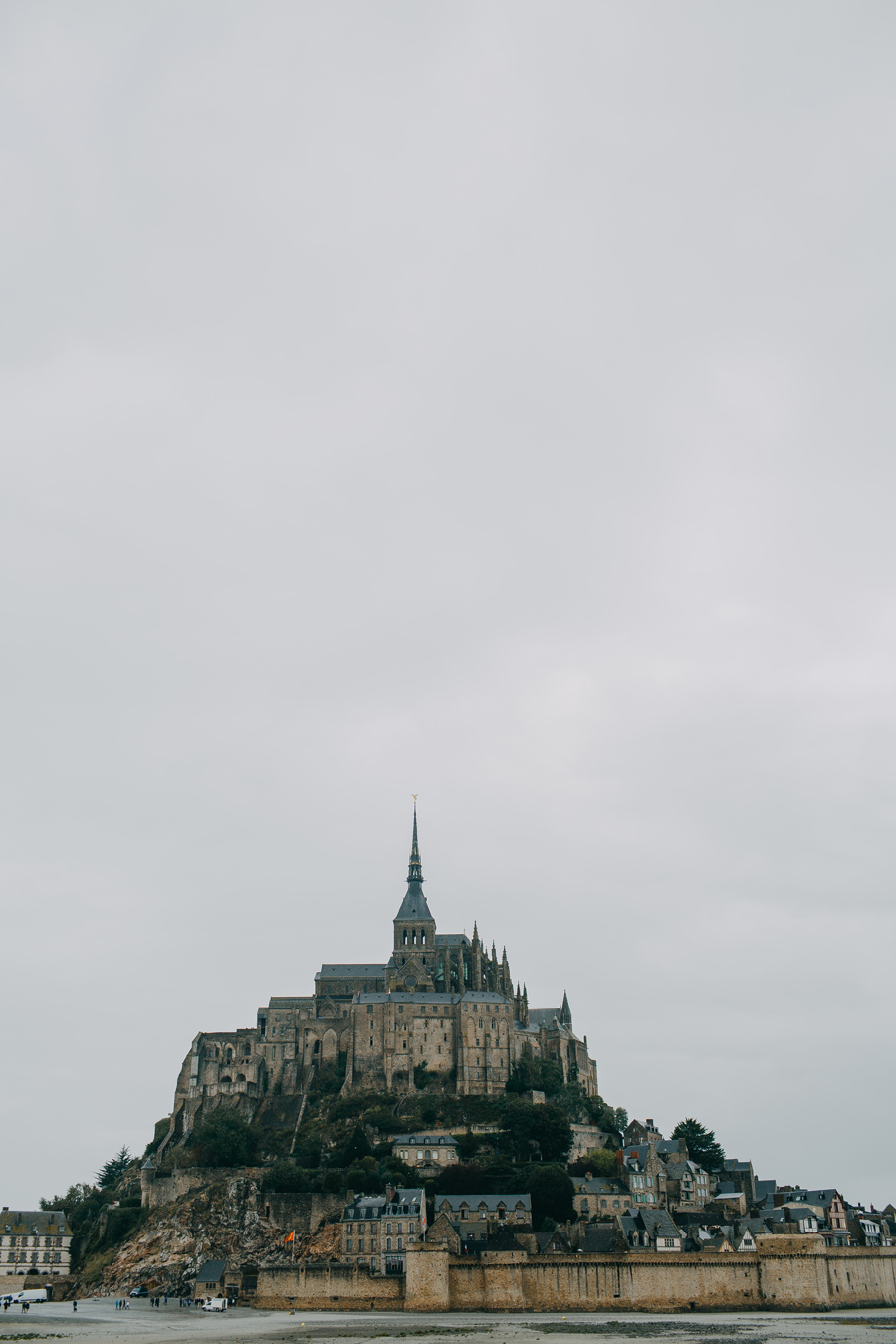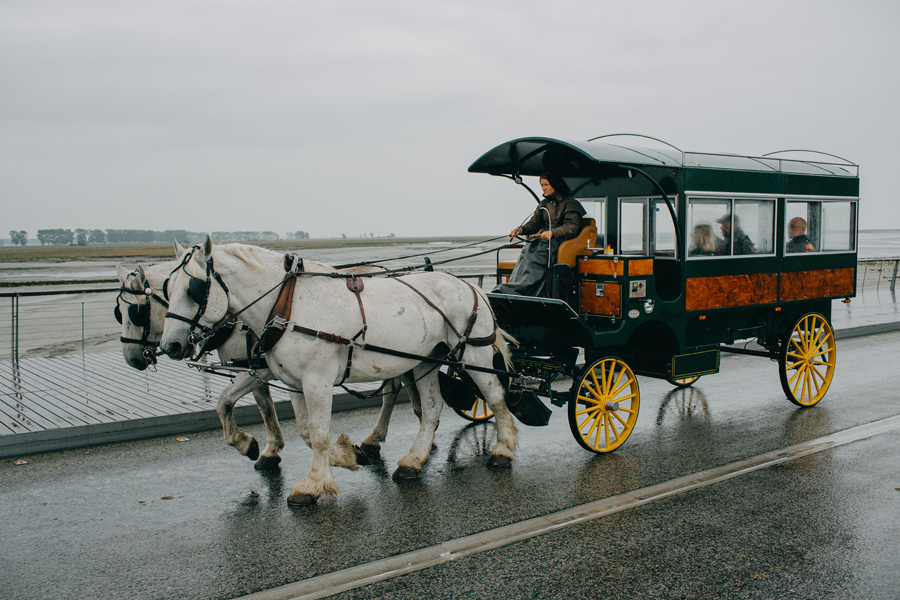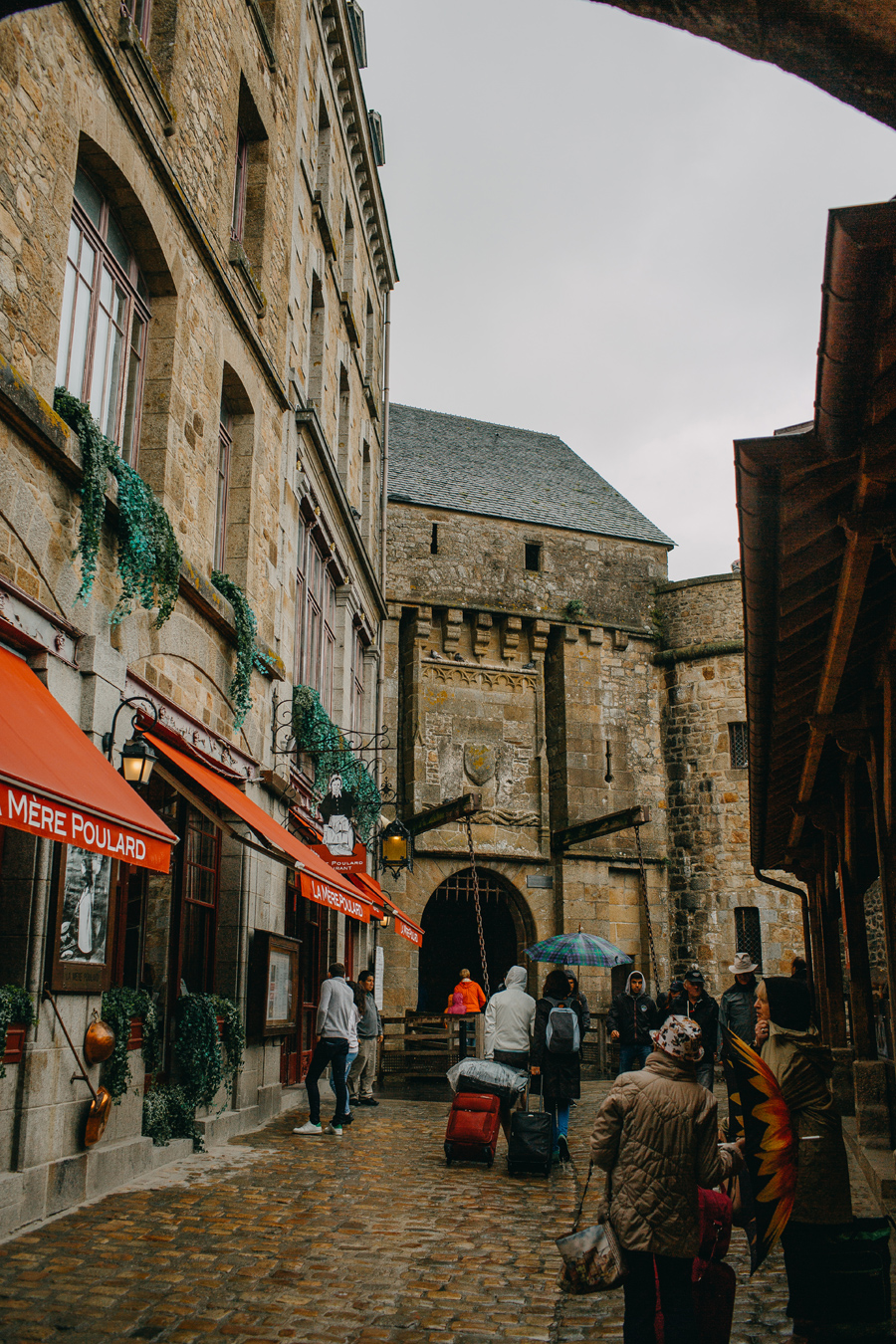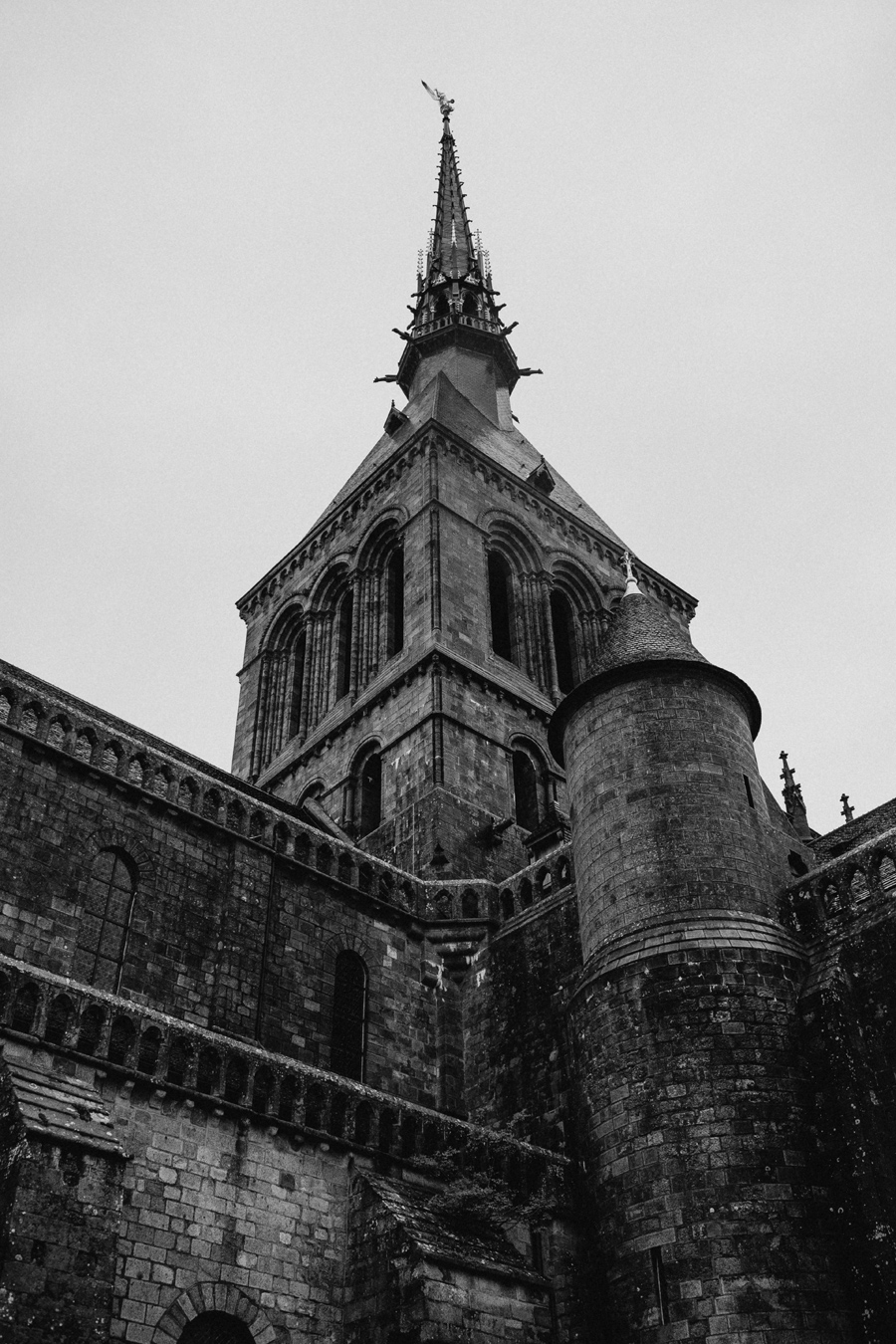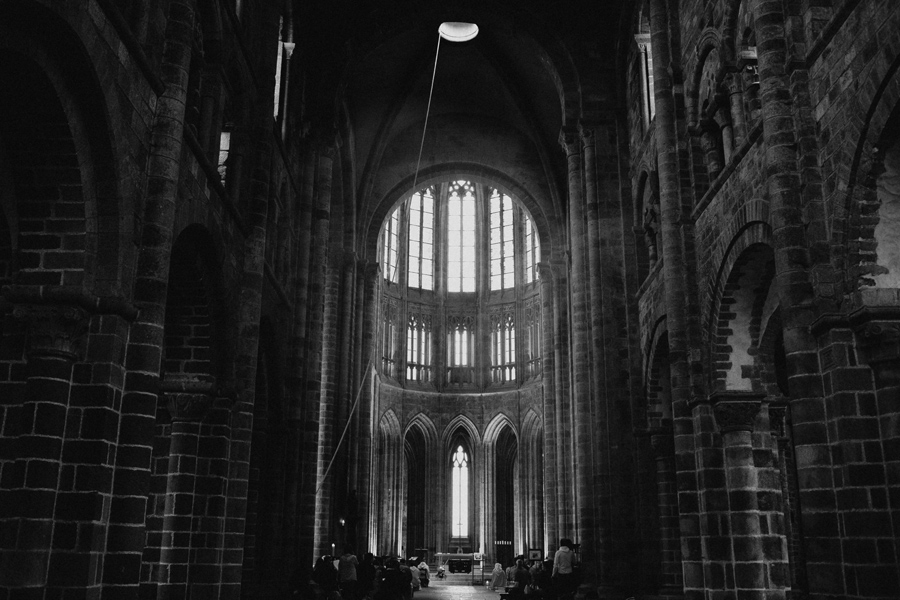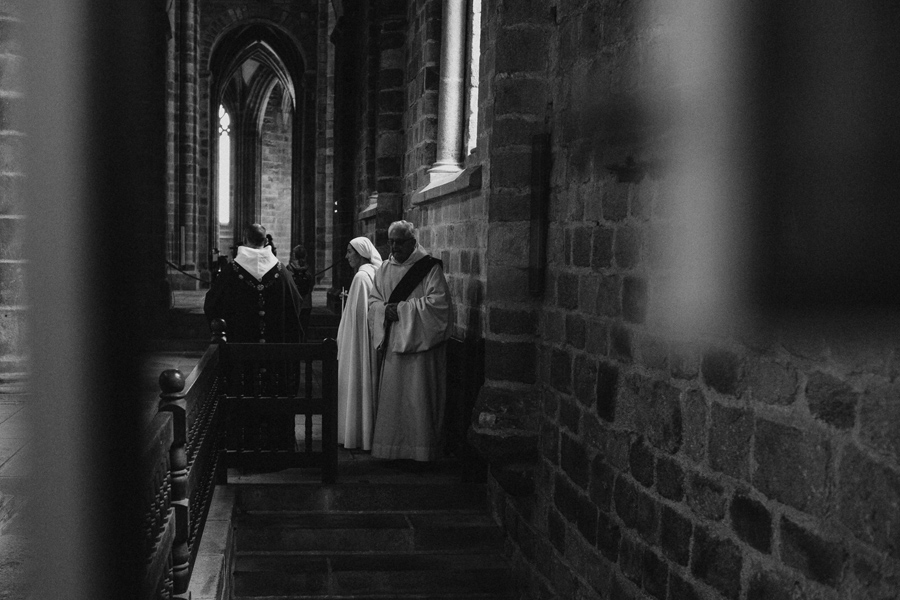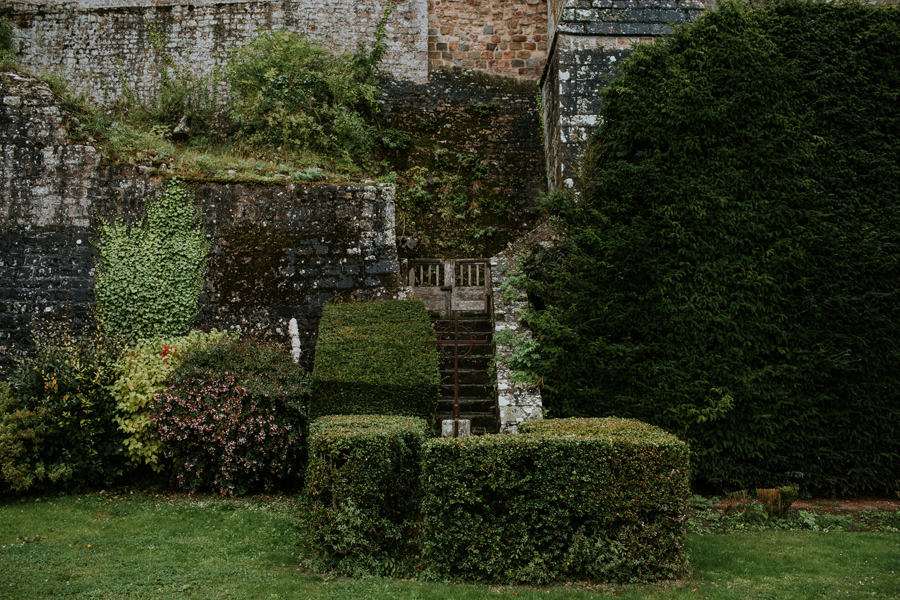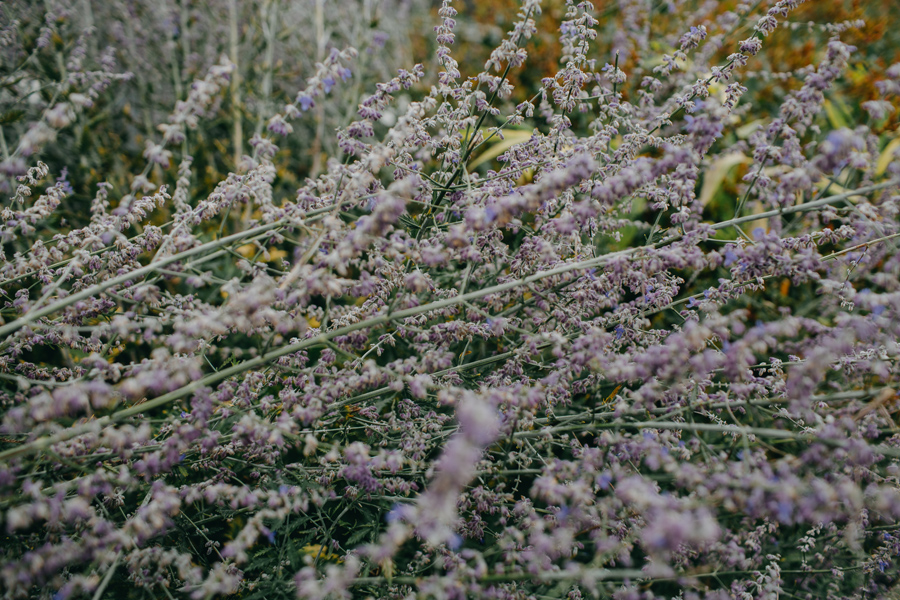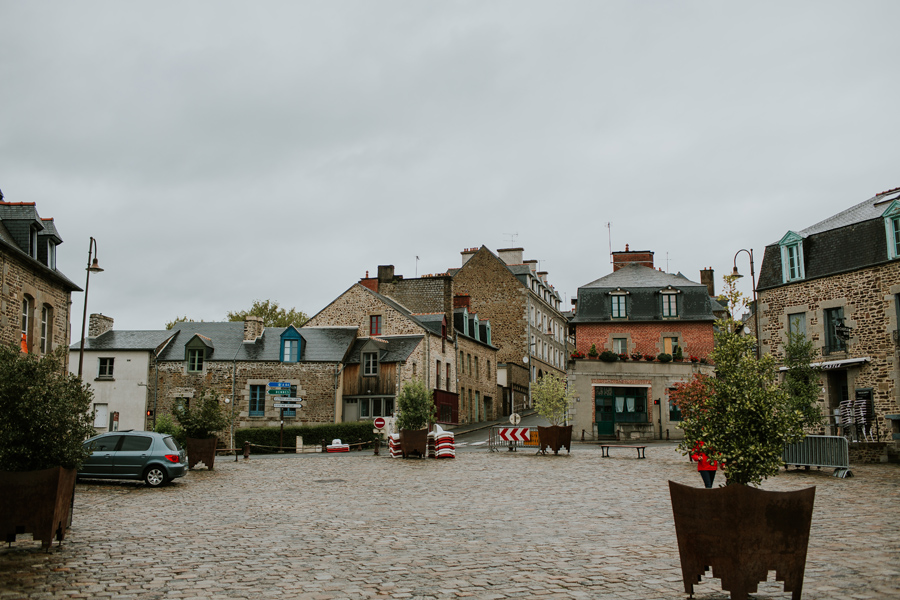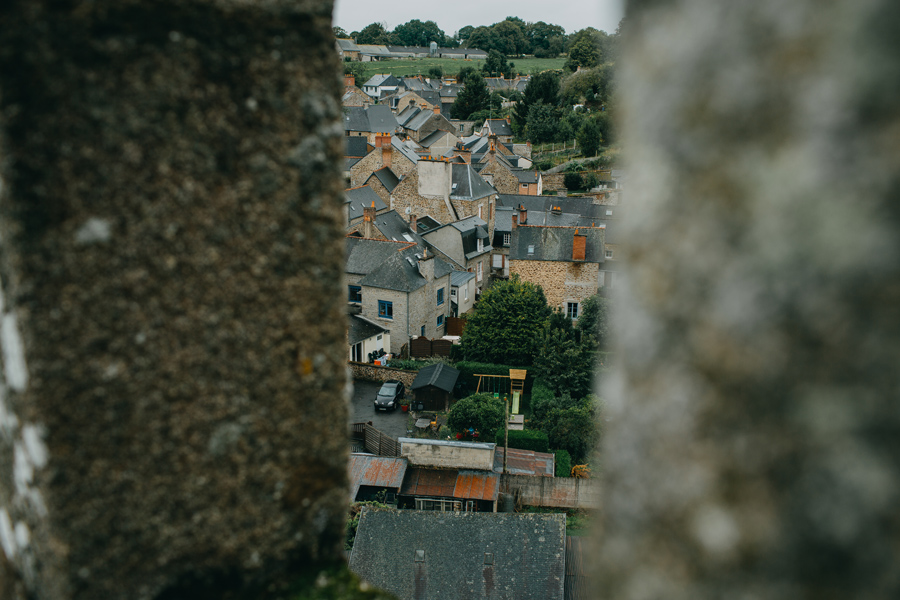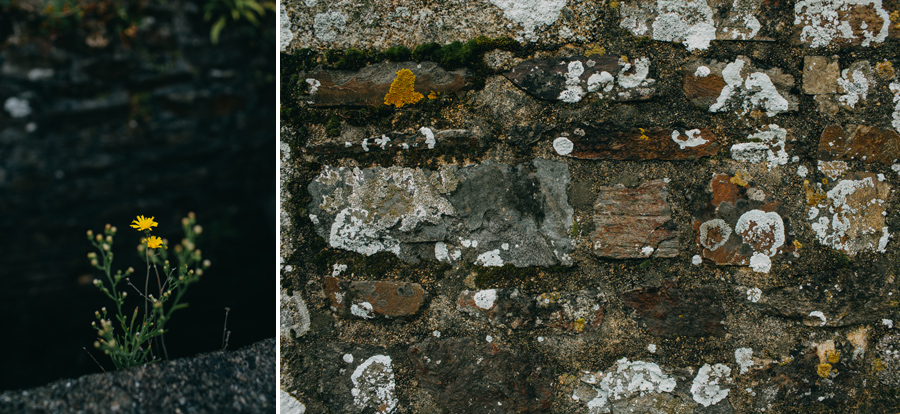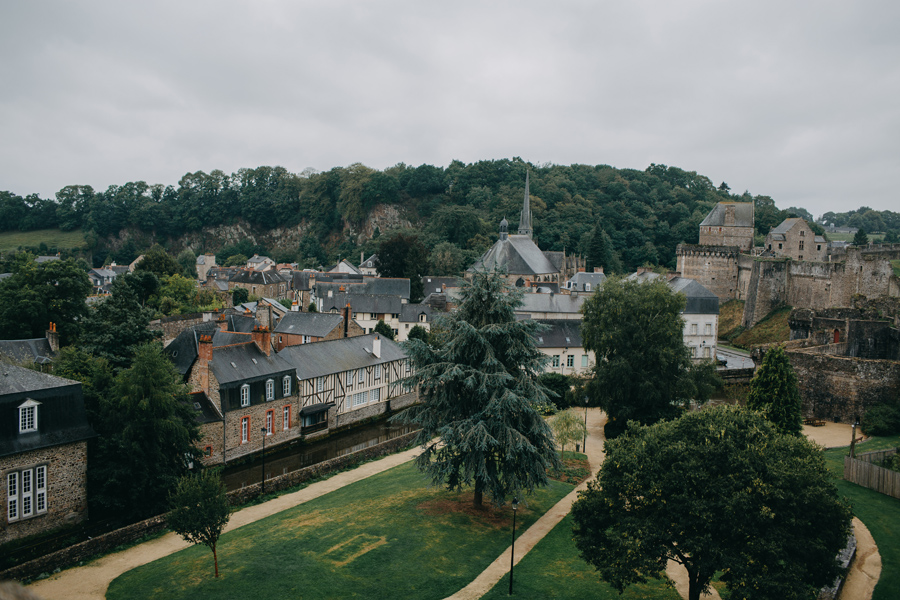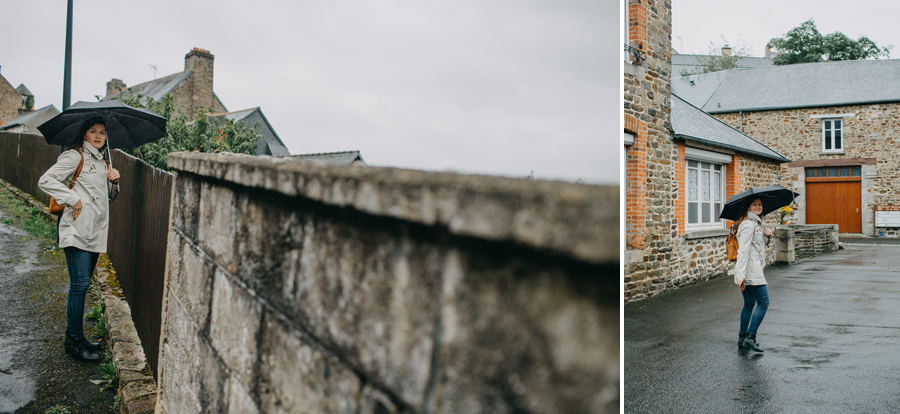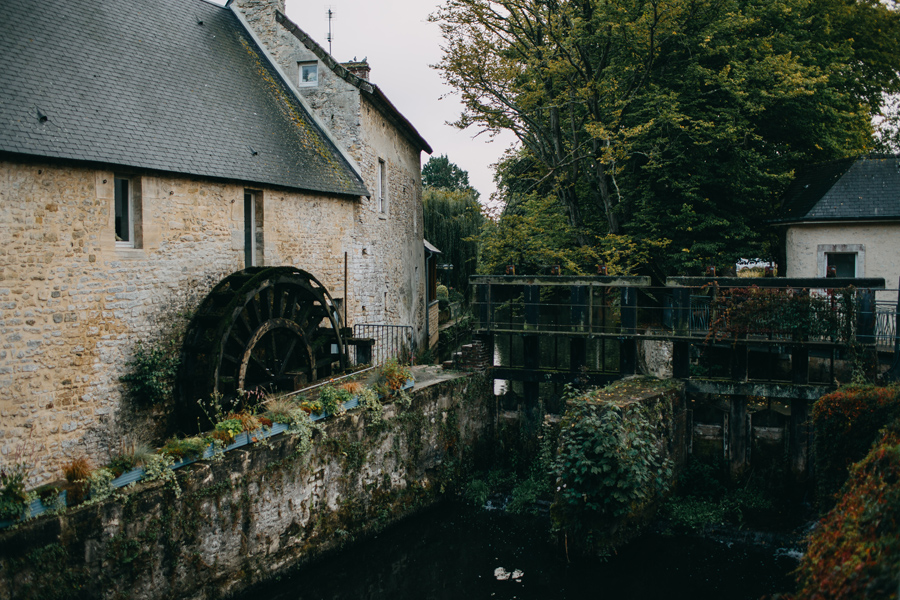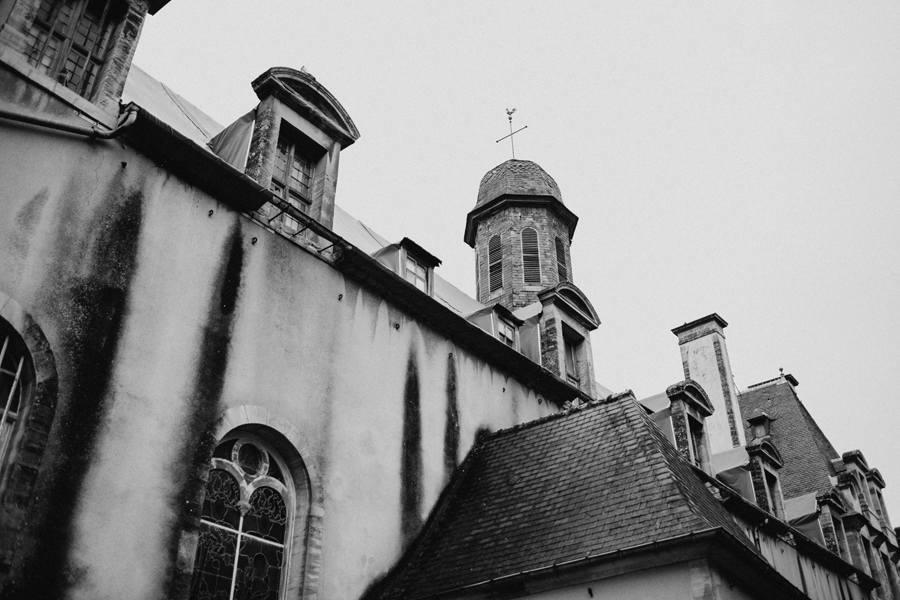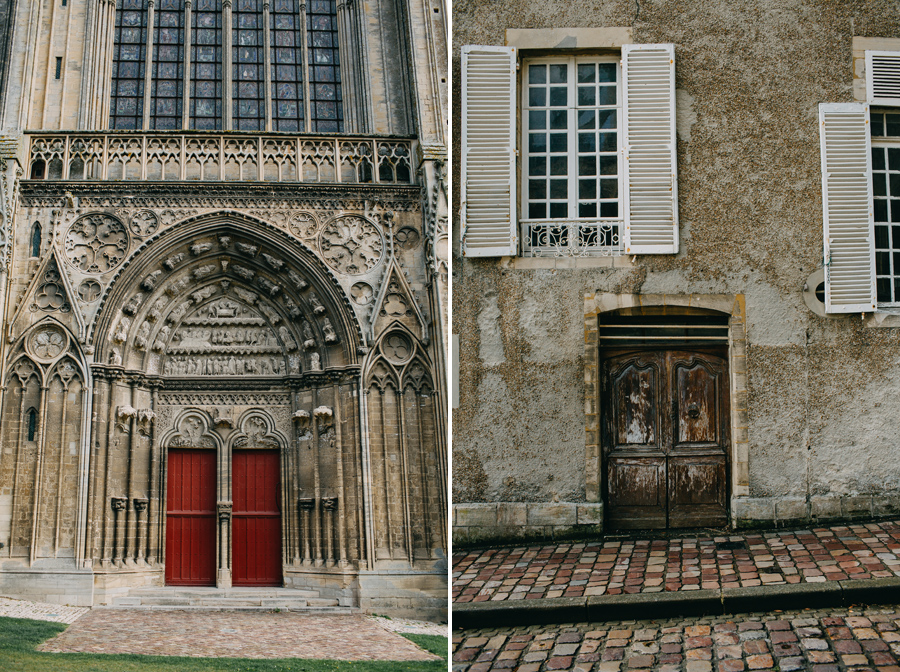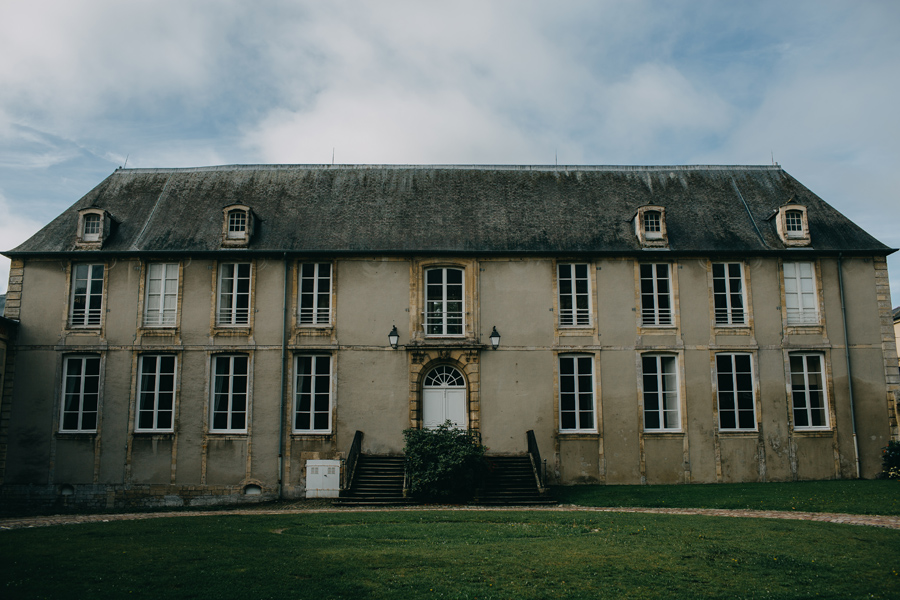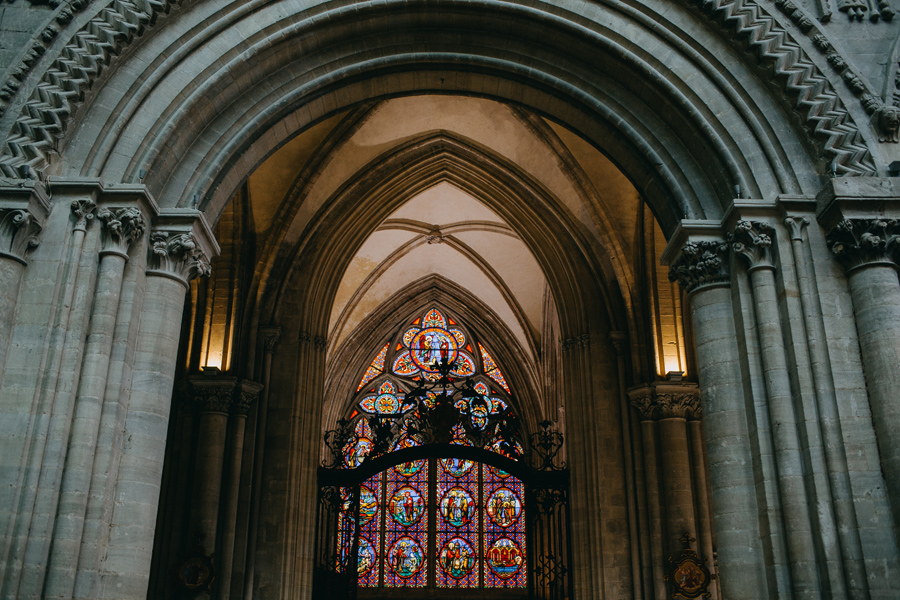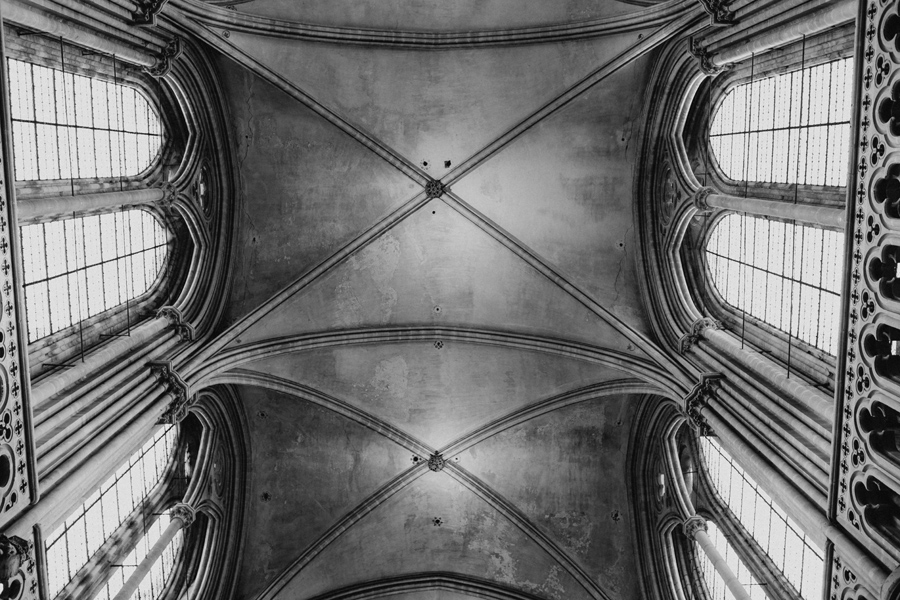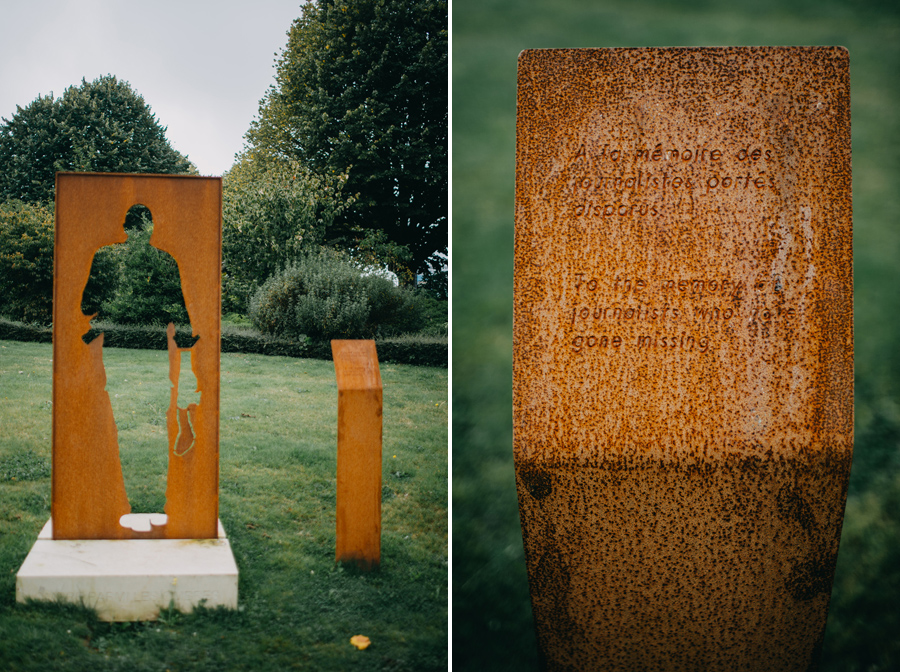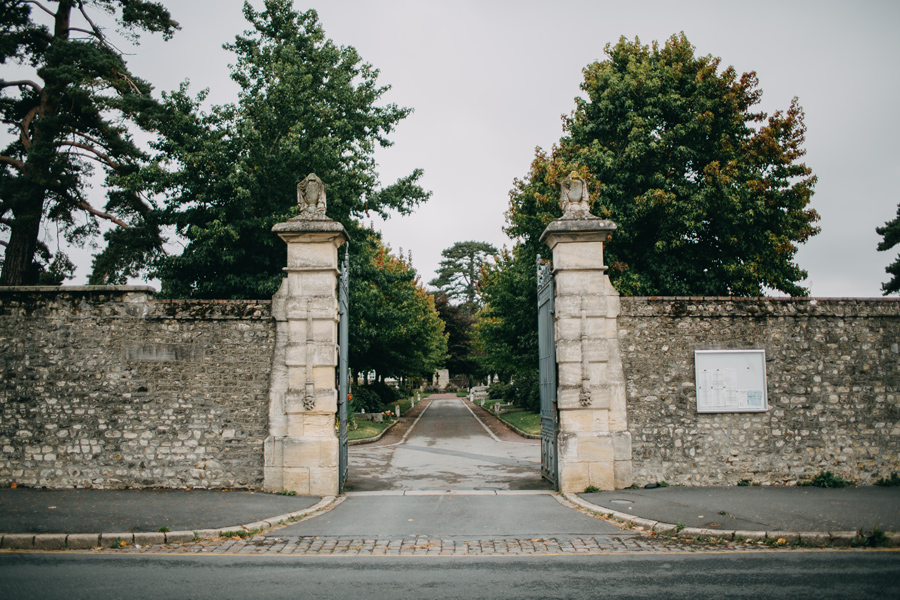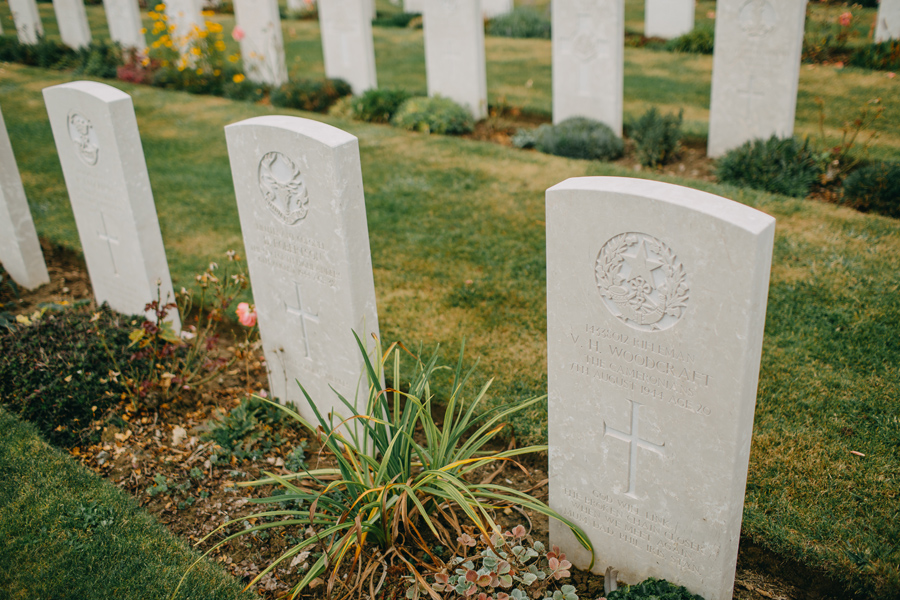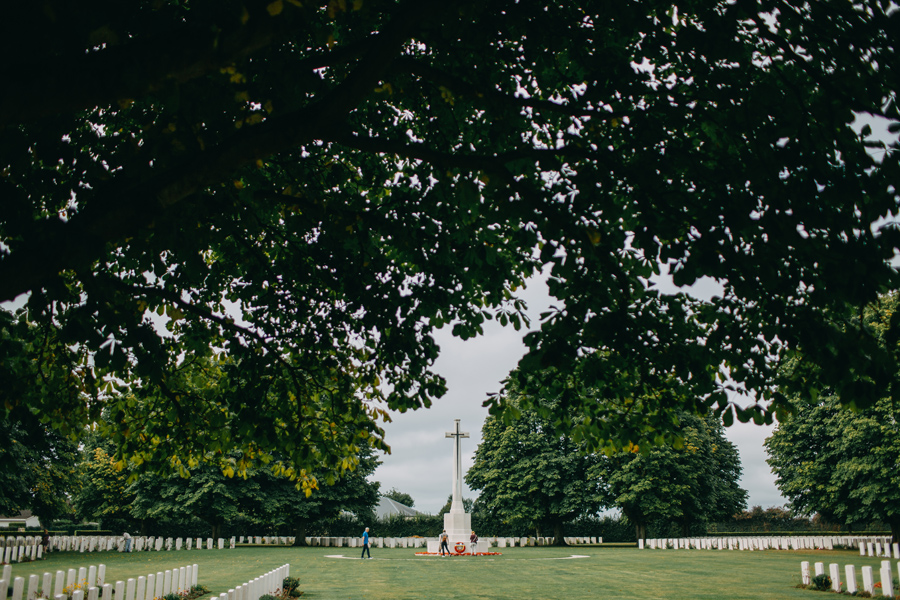I apologize in advance if this post gets a little philosophical, but I guess that's what France does to you. There are very few times in my life when I have been so overwhelmed by a place, where such immense beauty is juxtaposed with such a unimaginable tragedy. It makes you wonder how such horrible things can happen in such a beautiful place. I speak, of course, of Normandy, in northwestern France, saturated with rich history, breathtaking landscapes, and delicious wine.
Our trip began in the village of Sainte Mère-Église, Normandy, one of the first European towns liberated from the Nazis in WWII, where U.S. paratroopers were dropped behind enemy lines just a few miles inland from Utah Beach. It was the site of a well-known incident during the D-Day invasion where an American paratrooper found his parachute caught on the village church spire upon his decent. He hung there helpless for two hours watching the battle below before the Germans temporarily took him prisoner.
You can still see a parachute hanging from the tower, and a beautiful stained glass window in the church commemorates the heroics of the allied forces. Era-appropriate cars are parked outside the church, which are not only just really cool to check out, but also help to immerse you in that point in time. Sainte Mère Église is also home to a fantastic Airborne Museum that is more than worth your time. It's packed with incredible artifacts, maps, and stories. You can check out the Waco gliders and a C-47 used to land men and equipment in Normandy on D-Day. This place was also perfect for an audio-visual learner like myself.
Next, we made our way to the coast, driving through small towns and open farm fields. As an American, it can sometimes be difficult to remember that, while U.S. troops did fight here in France in WWII, average civilians could pull back the curtains on their windows and watch as Nazi soldiers marched down their streets. At Pointe du Hoc, we wandered amongst huge craters left by air raids, climbed into remaining German bunkers, and looked over steep cliffs to rocky beaches below, which U.S. Army Rangers scaled under heavy fire on D-Day to take control of this strategic vantage point for artillery within range of both Utah and Omaha Beaches.
Later, I found myself walking along Omaha Beach on a bright, sunny day wondering how such atrocities could take place in such a calm, and serene venue. I think it's easy to forget that the beaches of Normandy are just that: beaches. Places often associated with serenity and recucuperation. As you continue on across the sand, you notice a few reminders of what happened there not so many years ago... beachside French homes waving American flags, commemorative plaques. Much of the physical evidence has been washed away by time and tides, but the reverberations of the actions on that day are still quite evident in today's world order.
We finished our first day at the Normandy American Cemetery just up the hill from Omaha Beach. We walked amongst the thousands of head stones and witnessed the American flag-lowering ceremony as "Taps" played. It was truly a solemn experience I won't soon forget. This setting, these sights, these emotions, really have a way of making you feel patriotic.
The next day, we ventured another 1000+ years back in time and visited the unmissable Mont Saint-Michel, a grand monastery and tiny village set atop a a massive rock-island accessible at low tide, but would have deterred would-be medieval invaders at high tide. It's a fascinating sight to see, even on a gloomy, grey day. The sight of it on the horizon inspired many an "oooh" and "ahhh" from the passengers on our bus as we approached. It reminded me a bit of our recent adventure to Civita in Italy. We toured the monastery and then strolled through the tiny village-on-a-rock as it started to rain, so my wife and I ducked into a small cave-like nook off the walkway where we gobbled down baguettes whilst attempting to stay dry.
We finished our day in Fougeres. This little village is host to something I was excited to see in France: castles. I don't know about you, but I have a hard time passing up the opportunity to see one. While many castles do look quite similar, I find there's something romantic about imagining yourself as a knight or a blacksmith living in this rocky fortress... but maybe that's just me.
For one last history-rich excursion in Normandy, we spent our last day in Bayeux. One of the most famous sights to see there is the Bayeux Tapestry, which depicts the Norman conquest of England from 1064–1066 led by William the Conqueror. Be sure to take the audio-guided tour along the tapestry, and check out the museum exhibits upstairs for more explanation of its complicated history. Next, we wandered over to the town's grand cathedral, an interesting reflection of the town's history, borrowing elements from both Norman and Gothic architecture, and hosting a WWII memorial near the back.
After the cathedral, my wife and I peeled off from the rest of our group and spent some time at the Bayeux War Cemetery honoring the graves of British soldiers who fought to liberate Bayeux from the Nazis after landing at D-Day. The individualized, heart-wrenching epitaphs and the brightly colored flowers along the rows of headstones made for a uniquely profound experience.
Something we came across unexpectedly was a Reporters Memorial for 787 journalists who have been killed on the job since 2005, either on the battlefield as war correspondents or specifically targeted by those hostile toward their reporting. As a photographer and self-proclaimed photojournalist, this really caught me off-guard. You can also see the copper memorial inscribed with "To The Memory Of The Journalists Gone Missing" in my photos below. A truly inspiring memorial that I highly recommend seeing.
Normandy. It's one of those magical places that offers you the opportunity to easily step back in time. I suppose much of Europe offers such adventures, and the Northwest of France is no exception. When summing up Normandy in one sentence, I think Rick Steves said it best: War-Torn yet Full of Life. But while the past still stings, the life is not gone. Scars remain, but that doesn't mean you shouldn't have another glass of Bordeaux or some delicious Calvados while surveying the French countryside and thinking deep thoughts. Until next time, France. Cheers!
NWx

